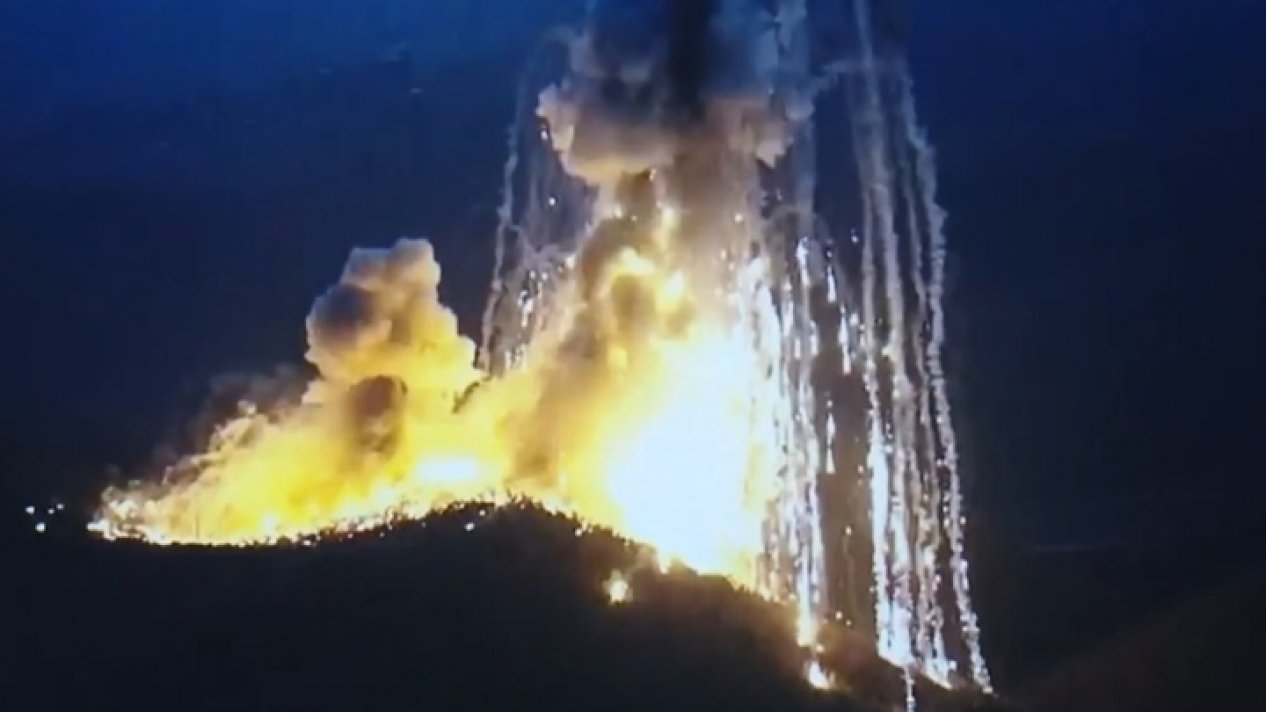
In recent days, several Armenian media and social networks have raised the topic of Azerbaijan’s use of prohibited phosphorus munitions during the Second Karabakh War. There are various headlines varying from “the world community turns a blind eye to…” to calls to help “a participant in the war who has suffered from the use of these munitions and is undergoing treatment.”
Let’s try to figure out how true are the statements of the Armenian media and social networks about the use of phosphorus munitions by Azerbaijan during the Second Karabakh War.
To begin with, the Armenian side for the first time accused the Azerbaijani military of using phosphorus ammunition to set fire to forests, where “peaceful residents of Nagorno-Karabakh are hiding from shelling” on October 30. Armenian human rights defender Arman Tatoyan posted a video on his Facebook page as evidence of the shelling of Karabakh’s forests with phosphorus shells. Further, on November 3, the so-called “Emergency Situations Service of Nagorno-Karabakh” published a photo, which allegedly showed cluster munitions with phosphorus used by the Azerbaijani side. As can be seen, the photo shows an object similar in shape to a projectile with a bent nose.

The Azerbaijani side, in turn, stated that Armenia itself uses shells with white phosphorus. Azerbaijan stated that the Armenian military uses phosphorus shells to set fire to the forests of Shusha and Topkhana. The Azerbaijan National Agency for Mine Action (ANAMA) established that on November 2, the village of Sahlabad in the Terter region was fired upon with shells filled with phosphorus.
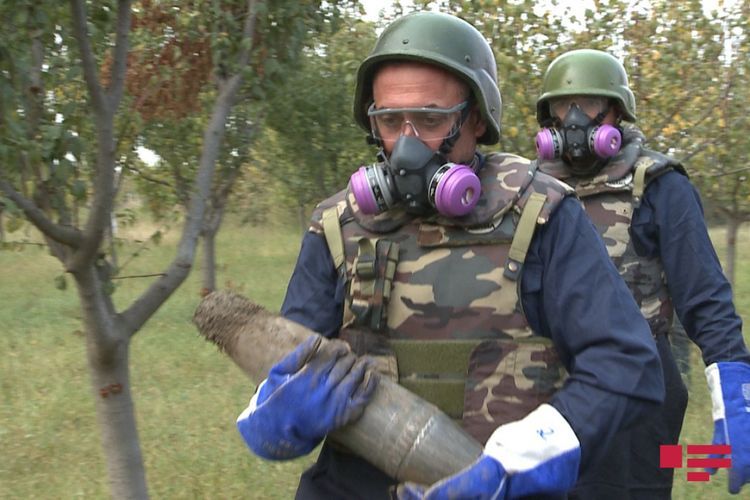
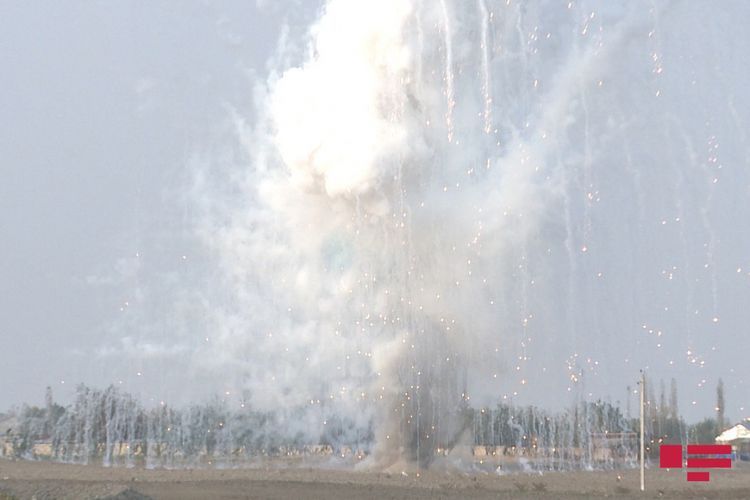
On November 3, Azerbaijani Presidential Aide Hikmet Hajiyev tweeted about the use of phosphorus shells by the Armenians against the residents of Tartar.
“Attacks on civilians or civilian objects as well as on forests or other kinds of plant cover White Phosphorus shells prohibited under the Protocol III on Prohibitions or Restrictions on Use of Incendiary Weapons of UN Convention on Certain Conventional Weapons of 1980,” Hajiyev tweeted.
But which of the opposing sides could use such shells and for what purpose?
On November 13, on the DFRLab (Digital Forensic Research Lab) website, (the research program of the Atlantic Council - the American think tank under the NATO), a study was presented based on the analysis of satellite imagery of forest fires in Karabakh and reports from Armenian sources about the alleged use of the ‘ammunition containing white phosphorus’ by the Azerbaijani armed forces.
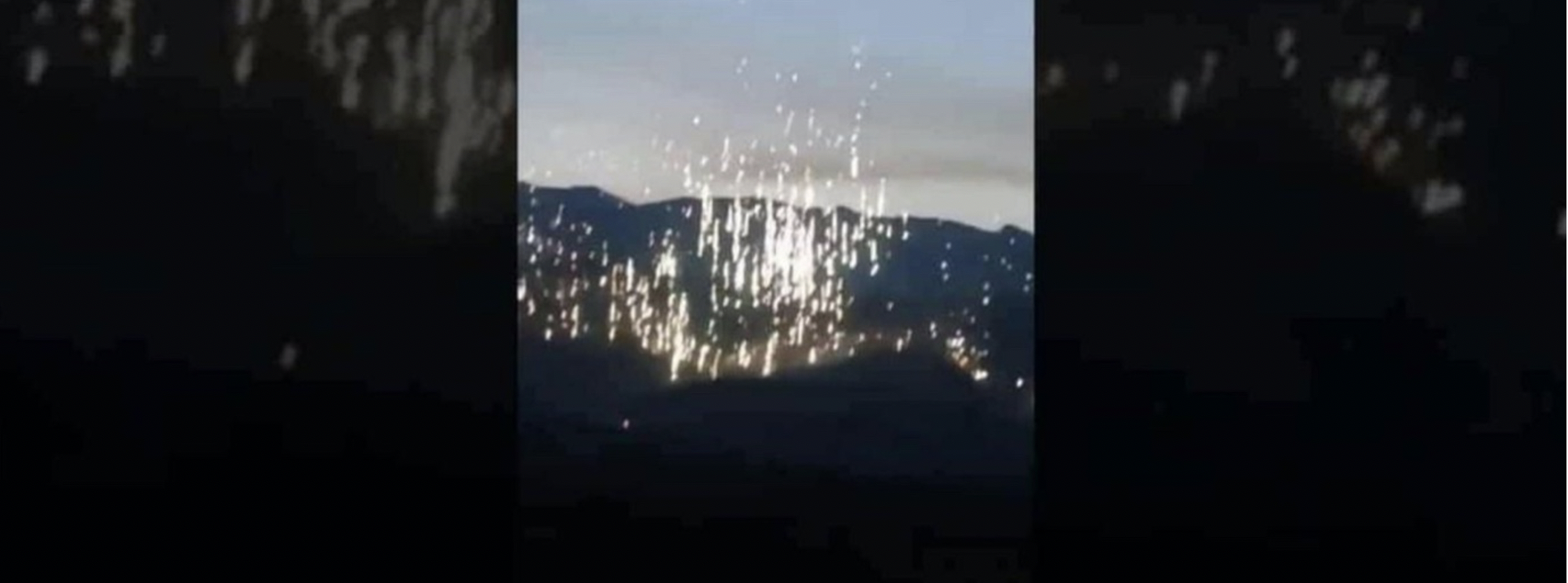
The authors of the study presented videos published by the Armenian side, in which one can see fire streaks falling in a scattering in the night sky over a wooded area and trees engulfed in flames and smoke. The study also notes that none of them record events in the populated area. The authors of the study note that the purpose of the use of these munitions was not the civilian population, but the forests.
“Satellite imagery confirms, however, that large areas of forest in Armenian-controlled territory showed extensive fire damage at the same time as the videos alleging Azerbaijan’s phosphorous munitions use appeared,” experts from the Digital Forensic Research Lab believe.
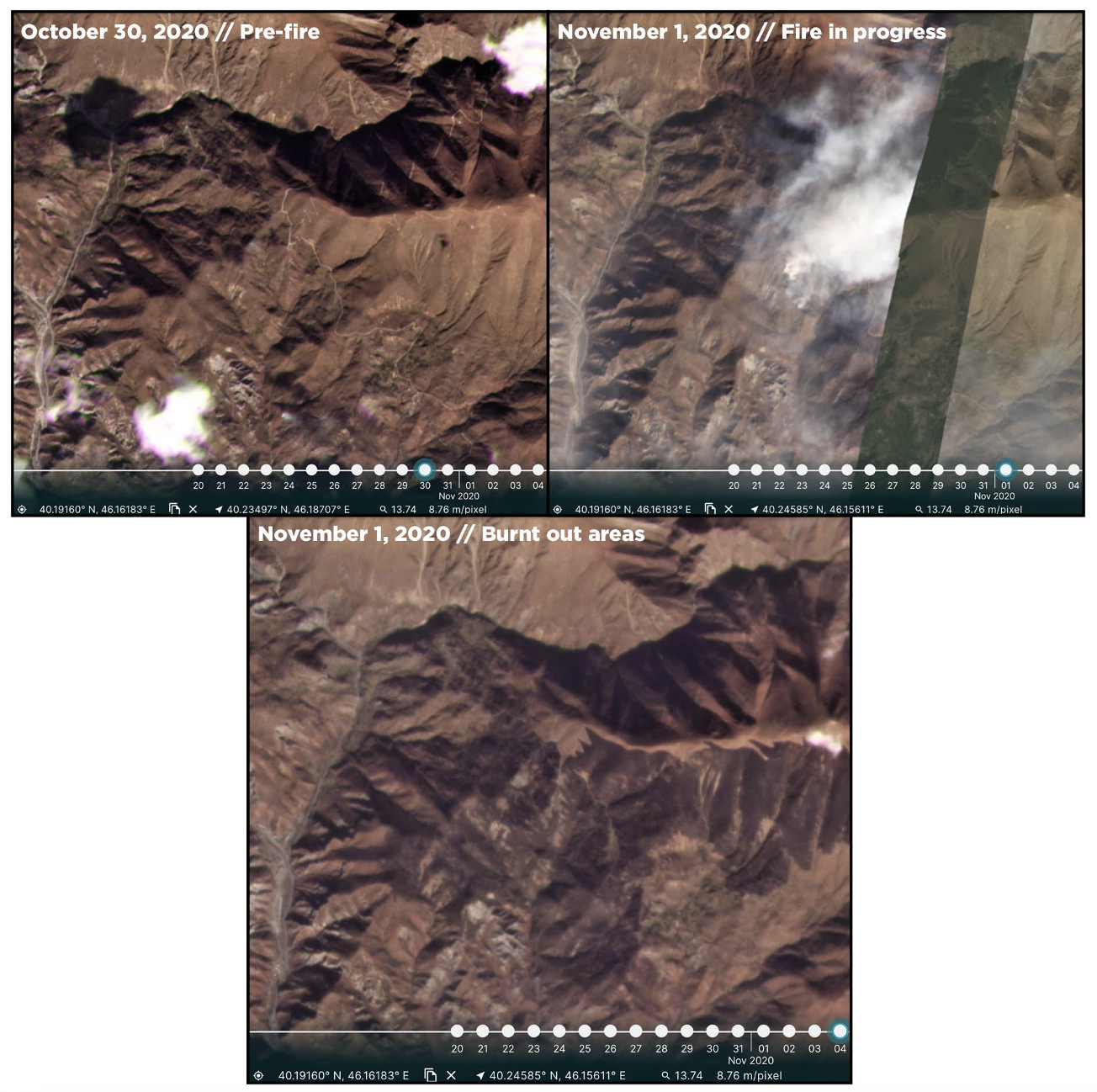
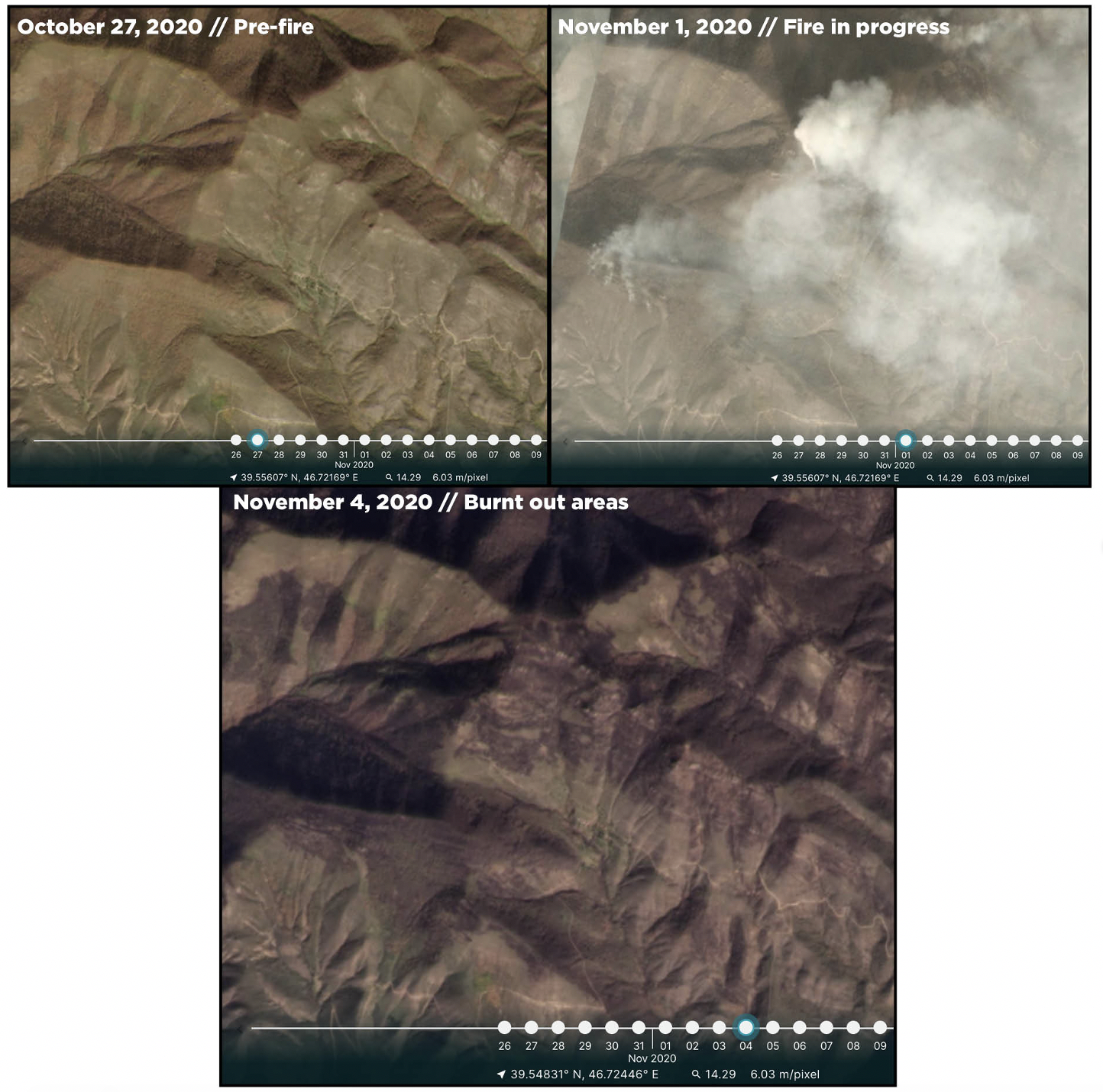
According to the researchers, to confirm use of white phosphorus based solely on visual open-source evidence is difficult.
The authors of the study refrained from directly indicating the subject of responsibility and didn’t identify the use of a specific type of (phosphorus) weapon, accompanying their conclusions with explanations of this kind: “as reported,” “looks like,” “similar to,” “presumably”, etc.
There is not a single proof of the use of phosphorus munitions by Azerbaijan during both the First and Second Karabakh wars. The Armenian side failed to substantiate its accusations with evidence. Armenia also denied its use of phosphorus shells during the Second Karabakh War.
However, the evidence remaining in the liberated territories suggests otherwise.
For example, on December 25, 2020, 22-mm shells with white phosphorus D-4 were found on the territory of the former Armenian post in the liberated village of Sugovushan of the Terter region.
From July 3, 2021, the ANAMA has begun work to neutralize the former ammunition depot in the Jabrayil district. During the clearance operations carried out by the ANAMA specialists, 157 unexploded ordnance, 1,185 shells of various calibers, 5 kilograms of explosives (TNT) and 17 phosphorus shells for an 82-mm mortar were found.
Information on the detection of phosphorus shells used by the Armenian side during the war days in the liberated territories is also proved by the fact that Armenia used prohibited substances both in the First Karabakh war and during the April 2016 battles.
On May 10, 2016, the ANAMA discovered an unexploded phosphorus artillery shell on the territory of the Askipara village of the Terter region on May 10, which was destroyed on May 11 by the agency’s specialists with the participation of the military attaches of the embassies accredited in Azerbaijan and field assistants of the personal representative of the OSCE chairperson-in-office. The investigation revealed that the unexploded ordnance found in the territory of the village of Askipara, Terter region, was a shell from a 122 mm D-4 type cannon (smoke projectile), which includes 3.6 kg of P-4 (chemical code of white phosphorus).
A serious investigation of the use of chemical weapons by Armenia was conducted by the Lithuanian military journalist, participant of the first Karabakh war, Ricardas Lapaitis. While on the front lines, he witnessed many terrible facts.
And, finally, if the Armenian side during the Second Karabakh war used phosphorus ammunition to set fire to forests, then for what purpose?
During this war, the Azerbaijani army quite actively used various models of drones, which is why the Armenian side suffered serious losses. The air defense and electronic warfare systems of the Armenian army, capable of fighting drones, were destroyed.
News of setting fire to the forests began to spread from October 30. After a few days, the Azerbaijani armed forces managed to take firm control over the city of Shusha and continue the offensive in several directions, but already outside the city.
That is, the use of phosphorus ammunition to set fire to forests was in the interests of the Armenian military. Thus, they tried, firstly, to interfere with the means of air strikes of the Azerbaijani army which was using drones, and, secondly, to hinder the offensive of the Azerbaijani army on Shusha. It is no coincidence that forest fires were observed south of Shusha city and east of Khojavend city, where the Armenian army fought defensive battles.
Considering the above-mentioned facts, it is safe to conclude that the statements of Armenian sources about the use of banned phosphorus ammunition by Azerbaijan during the Second Karabakh War aren’t supported by anything and are unfounded accusations.




















